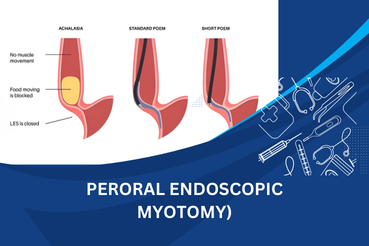
POEM is the modern, minimally invasive endoscopic technique of treating achalasia and also other disorders that cause difficulty in swallowing. During the procedure, the doctor inserts a flexible endoscope through the mouth into the esophagus without performing any cuts or external incisions.
During the POEM procedure, a small tunnel in the wall of the esophagus is created, and through that

tunnel, the specialist delicately cuts the too-tight or overactive muscle at the lower end. This allows food and liquids to easily pass from the esophagus into the stomach.
The procedure is done under general anesthesia and generally takes about one to two hours. Most patients are then able to return to normal activities within a few days. Because POEM does not leave scars and is long-lasting, it has become one of the most effective and comfortable ways of treating swallowing disorders such as achalasia.
Peroral Endoscopic Myotomy (POEM) has emerged as a safe, effective, and minimally invasive treatment for achalasia and other esophageal motility disorders. It avoids external incisions, provides rapid recovery, and offers long-term relief from swallowing difficulties. With high success rates and fewer complications, POEM is considered a breakthrough in the management of complex esophageal disorders.
POEM is a minimally invasive endoscopic procedure used to treat achalasia and other esophageal motility disorders. During this procedure, the inner muscles of the esophagus are cut through an endoscope to relieve swallowing difficulties.
POEM is suitable for patients who suffer from difficulty swallowing (dysphagia), food sticking in the esophagus, chest pain, or frequent regurgitation, especially when medications or balloon dilation have not been effective.
The procedure usually takes between 45 minutes to 2 hours. Most patients stay in the hospital for 1–2 days and can return to normal activities within a few days.
After POEM, patients are usually advised to start with a liquid diet, then gradually move to soft foods, and finally resume a normal diet within a few weeks, under the doctor’s guidance.
POEM is considered a safe procedure with a success rate of over 90%. However, potential risks may include gastroesophageal reflux disease (GERD), infection, bleeding, or, in rare cases, other complications.